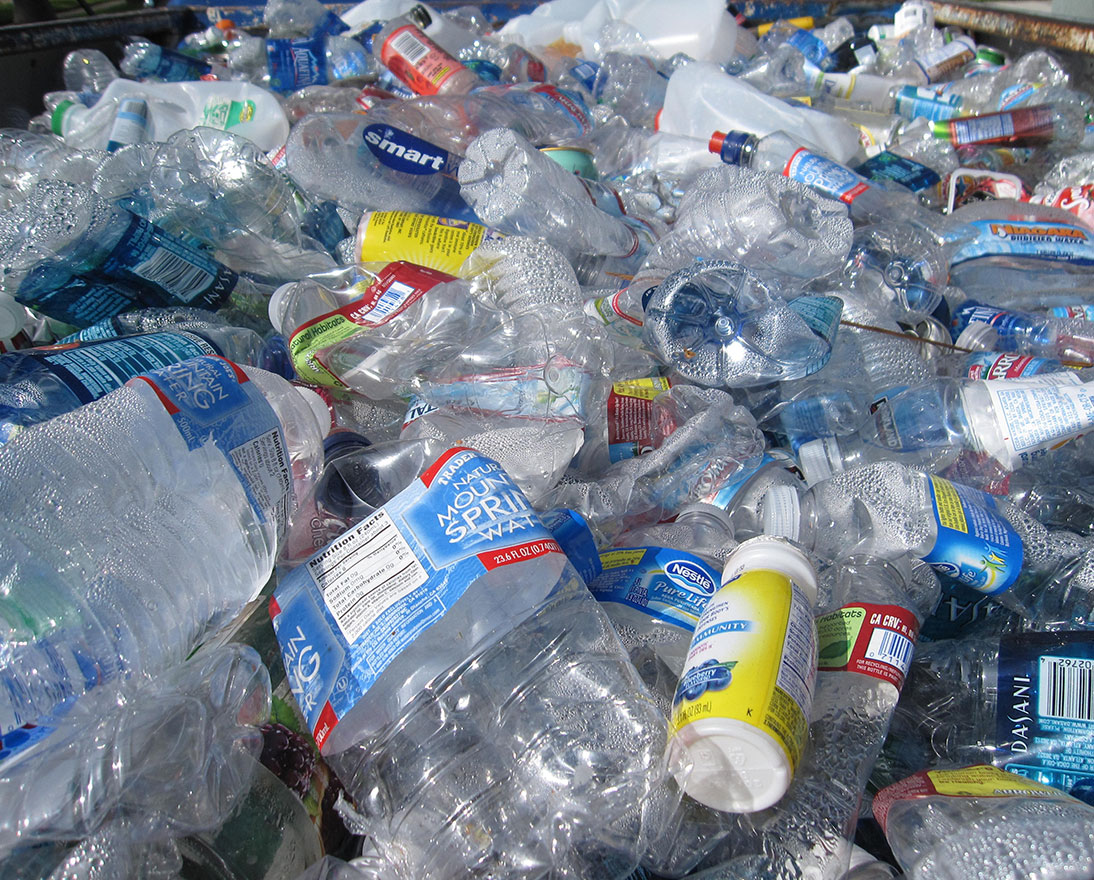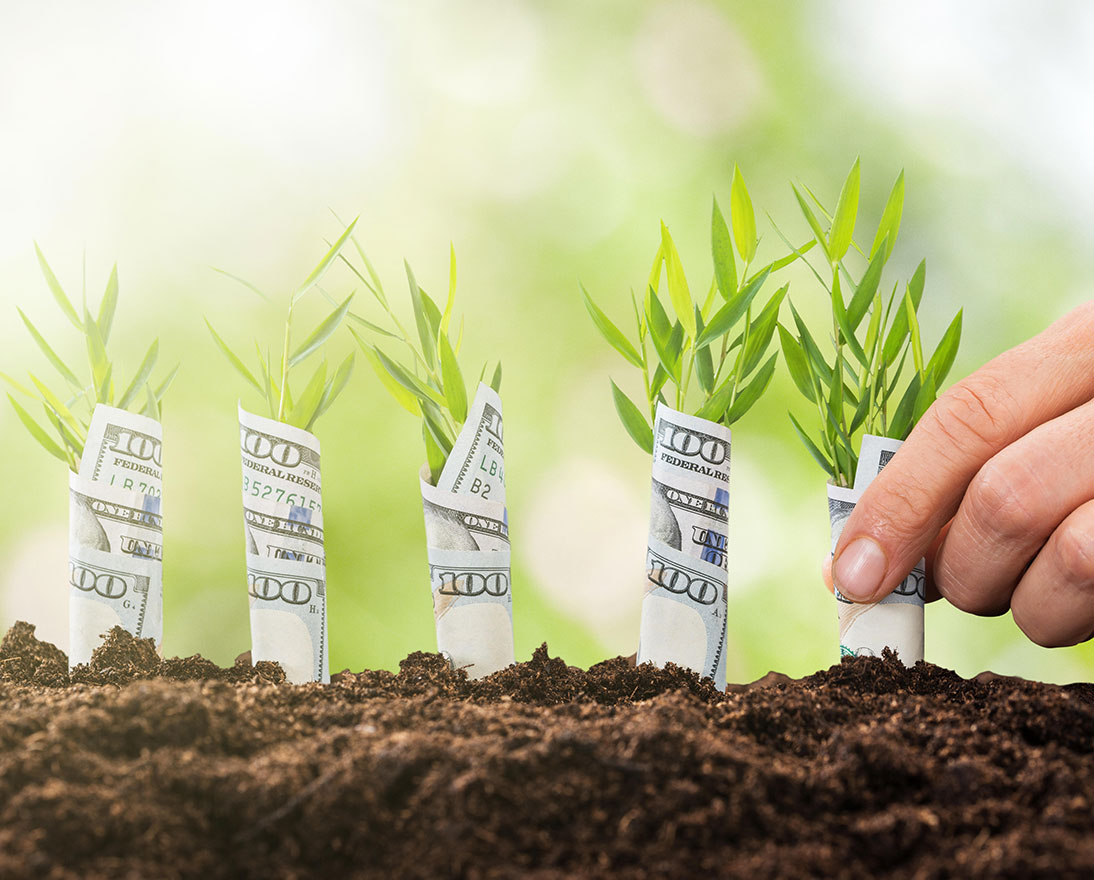5 ways to reduce, reuse and recycle – and cut global waste
SustainabilityArticleMarch 18, 2022
With global waste projected to hit 3.4 billion tonnes in 2050, it has never been more important for us to upcycle, repair and buy secondhand to avoid items going to landfill. Here are five practical tips on how to make this happen.
It is a staggering – and sobering – fact that we have consumed more resources in the last 50 years than during the whole of human history. And more consumption, of course, means more waste. In fact, annual global waste is growing exponentially, with researchers forecasting that if current trends continue it will almost double to a colossal 3.4 billion tonnes by 2050.
So how can we combat the rising tide of waste and the environmental damage it is causing? Since the Industrial Revolution, Western economies have been built on the premise of “take, make, dispose”. Thankfully, as the world wakes up to the environmental costs, this consumerist attitude is being replaced by the “three Rs”: Reduce, Reuse and Recycle.
“To build a sustainable future, it’s time to dispose of the idea that the products we buy will miraculously disappear after we throw them away, when in fact most of them end up in landfills. The ‘three Rs’ can point us in the right direction to make smarter decisions about how we consume,” says Linda Freiner, Group Head of Sustainability at Zurich Insurance Group.
Reducing the quantity of resources we consume – by using better-designed products and services, for example – is the easiest place to start. But even if people do this at an individual level, the rapid growth of the global population means that humanity’s total consumption, and therefore waste, looks certain to rise for decades to come.
The third R, recycling, also has significant benefits. Recycling now supplies 40 percent of the world’s raw materials, and in doing so saves more than 700 million tonnes in CO2 emissions each year and is predicted to contribute USD 400 billion to global GDP over the next 10 years.
However, although recycling is clearly a positive, it is also something of a last resort. Breaking down waste into its constituent materials to then manufacture new products from them is often an expensive and energy intensive process. This is one of the reasons why the second R – reuse – is now playing an increasingly important role in cutting global waste. It is more environmentally friendly than recycling and automatically reduces consumption – because reusing or repairing an existing product nullifies the need to make or buy a new one. What’s more, there are more ways to fix, repair and reuse everyday goods than you might have realized. Here are five of the most effective:
1. Buy secondhand
An easy way to extend the lifespan of the products you use is by buying secondhand, recycled or, at the very least, recyclable goods in the first place. Most people have purchased secondhand clothes at some point in their lives and now everything from building materials to reconditioned home electronics can be bought from specialist reuse centers. This trend is driving a global boom in the secondhand economy. For example, the value of the global secondhand clothing market is predicted to hit USD 77 billion by 2025 – more than twice its value today.
2. Repair and reuse
Learning to maintain and repair more of the products you own – from a pair of ripped jeans to a broken lawnmower – is good for both the environment and your bank balance. Mending old clothes is an obvious place to start. Not least because the fashion industry accounts for 10 percent of global carbon emissions and nearly 20 percent of wastewater. Thankfully, what you do with your own clothes makes a measurable difference: in the UK, for example, deciding to actively wear a garment for nine months longer could reduce its impact on the environment by between 20 and 30 percent.
Beyond clothing, a wide range of products, including complicated electrical and electronic products such as home computers and batteries, can either be upgraded (by adding an updated processor to your laptop, for example) or reused. So the next time you’re about to throw away an old PC, consider this remarkable fact: there is more gold in a tonne of smartphones and other electronic waste than can be extracted from a tonne of ore. Manufacturers can also help by guaranteeing to repair faulty products or by making previously single-use items reusable. The Loop Alliance, for example, is non-profit zero-waste e-commerce system that delivers products to consumers’ doorsteps in packaging that can then be “collected, refilled and reused, sometimes more than 100 times.”
3. Upcycling
The potential for upcycling – which is the reusing of discarded products and waste materials to make new and different products – is practically limitless. Styrofoam can provide drainage for house plants. Wine corks can become homes for sewing needles. Egg cartons make useful packing materials or paint palettes. Chilled teabags can even soothe insect bites and minor burns.
Again, clothing has an important role to play. Thanks to its eco-friendly credentials, upcycling is also highly fashionable – or ‘refashionable’ – with no less an authority than Vogue declared it ‘the biggest trend in fashion right now.’
4. Donate or share with others
When you have fully exhausted your use for a product, whether through reuse, repair or upcycling, the best way to extend its lifespan is by giving it to a friend or family member, or by donating it to a charity/thrift shop, church, school, or community center. You can also list it on online marketplaces such as eBay and Freecycle, a global network of non-profit “gifting” groups and forums that now has more than 9 million members.
Even if you have a large domestic appliance that no longer works, you can donate it to a local repair shop or trade school to see if they can fix it and find it a new owner. Anything is better than your discarded possessions ending up in landfill. Another smart strategy that is both eco-friendly and cost-effective is to rent, borrow or share items that you only need to use occasionally, such as party decorations, power tools and sports equipment.
5. Watch your wastage
The best way to fully appreciate the impact of your consumption on the environment is to measure it. Most households keep track of their energy use but why not try monitoring the different categories of domestic waste (landfill, recyclables, reusables, compost etc.) that you produce? Simply tracking these materials using a weekly or monthly “waste audit” will give you a clear picture of the amount of stuff you typically discard, which can be a crucial first step – and motivational spur – to reducing your waste in the future.



